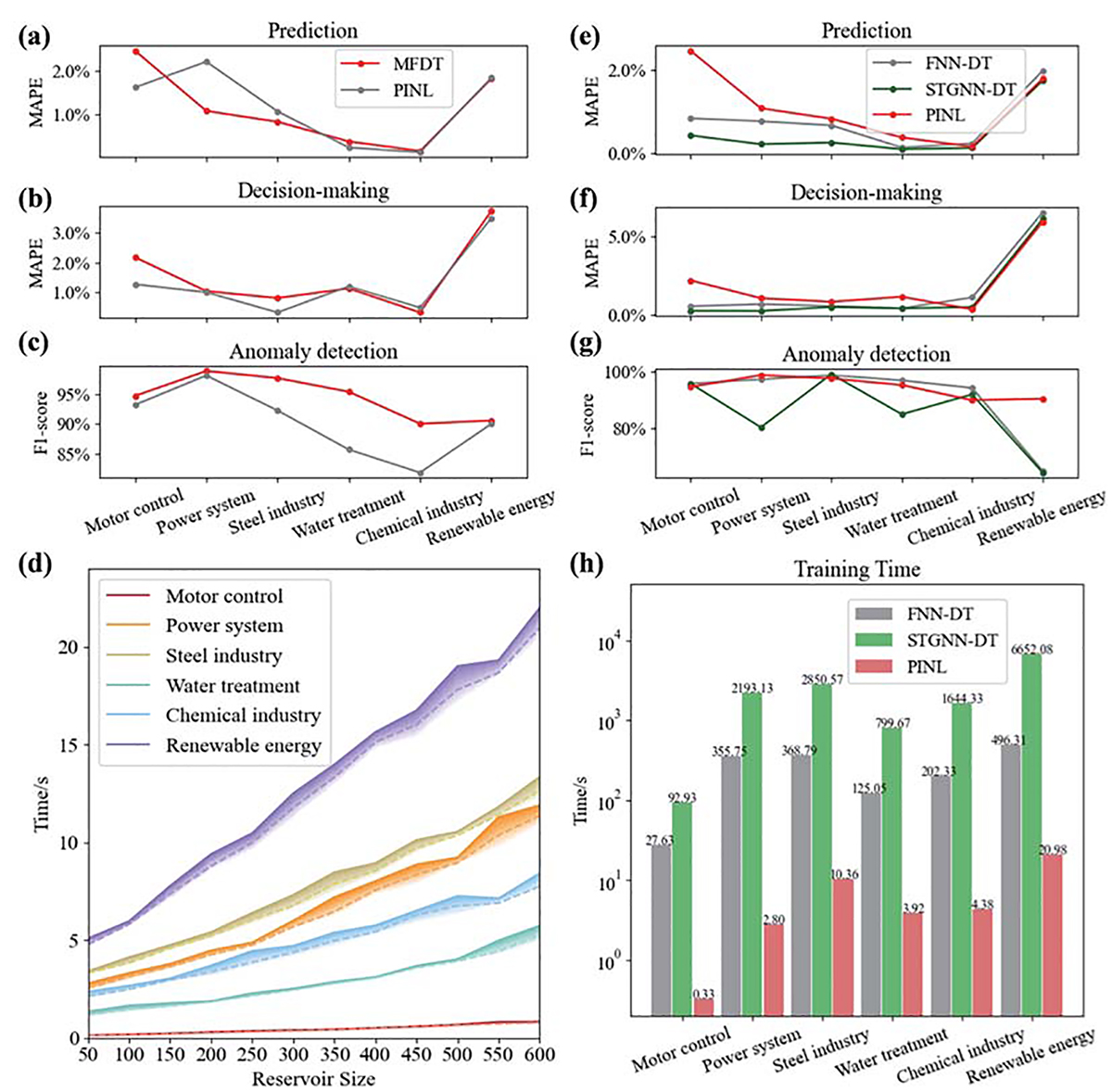Figure 5

Download original image
Evaluation of PINL's performance. (a)–(c) Effects of the integration of the structural knowledge on the performance of PINL. When no prior knowledge is available, i.e., model-free digital twin (MFDT), the structural code A is randomly generated to construct the graph skeleton. (d) Effects of network size on training time obtained from 20 trails across various ICSs. (e)–(h) Comparisons with representative machine learning-based DTs. (e)–(g) Accuracy comparison in prediction, decision-making, and anomaly detection. The proposed PINL scheme achieves comparable accuracy in capturing system dynamics and control policies in contrast to FNN-DT and STGNN-DT. (h) Model training time. A longer training time indicates greater computational demands and a lengthy testing process for parameter adjustments. Notably, the PINL has the least training time, underscoring its potential for practical implementation in ICSs with minimal effort.
Current usage metrics show cumulative count of Article Views (full-text article views including HTML views, PDF and ePub downloads, according to the available data) and Abstracts Views on Vision4Press platform.
Data correspond to usage on the plateform after 2015. The current usage metrics is available 48-96 hours after online publication and is updated daily on week days.
Initial download of the metrics may take a while.

